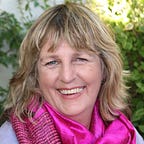LGBTQIA and the Enneagram
If I describe myself as LGBTQIA, will that effect what Enneagram Type I am? Will it make a difference?
One of the reasons I love the Enneagram is that irrespective of race, sex, location, creed, sexual inclination, financial situation, and anything else that we use to define ourselves, as far as the Enneagram is concerned, it makes no difference. We are more than those definitions essentially.
Whether you’re a city slicker in New York, or living in a small hut in rural Africa, if you’re a Type Five, you’ll display the same Passions and Fixations of your Type. Your Fivish desire for alone space may show-up differently according to your circumstances, but your motivations remain the same. As an African tribesman, you may enjoy time alone in the bush, while your American counterpart heads for his man-cave, a.k.a. study. Both of you will find being with others constantly, draining.
Or as an Eight, you’ll be (or want to be), manager of the industrial factory in Atlanta, or heading up the gay beach bar in Thailand. Basically, you enjoy being in charge because you’re an Eight right?
So, if our Passions are consistent with Type not sexual preference, then does our Type influence our sexual expression?(Passions used in the Enneagram sense, aren’t the person we’re currently pursuing romantically, but rather what drives our ego to act in certain specific ways depending on our Type).
Do certain Types have more LGBTQIA people?
A question I’ve been asked a few times is: “Do certain types have more people who identity as LGBTQIA?” There’s no volume of research data on this currently, although I’ve been connecting with various people around the world who are working now on researching this. The late Claudio Naranjo however, believed that certainly in the Western world, there is a predominance of men on the left side of the Enneagram (Types 5, 6, 7 and 8) and women on the right (Types 1, 2, 3 and 4).
I see this as being male versus female energy rather than necessarily actual men or woman. In Naranjo’s words “seduction” (female) versus “rebellion,” (male). So, Type 2’s and 4’s are known to be more archetypally feminine in their energy, sitting opposite the more masculine Type 8.
Irrespective then of your sexual leaning, if you’re on the left side of the Enneagram you’re likely to display more masculine energy. In the cases of Types 5, 6 and 7, “thinking” versus “feeling,” Types 2, 3 and 4. Thinking being archetypally more associated with the male principle, as opposed to feeling (female). Naranjo describes it as “aloofness,” as opposed to “warmth.”
And Nines?
What about the “nice” Nines then at the top of the Enneagram symbol? “Fence-sitters” of the Enneagram, they are positioned between the male and female aspects. Perhaps it’s because of their position and accepting behavior, that they are regarded as being the most pan-sexual of the Types. Nine’s are also the most likely to withhold sex in an unhappy relationship.
How does this link with Myers Briggs research?
Research from various sources does differ. Drawing though on Myers Briggs research and correlating those types to the Enneagram Types, it appears that for females, types Fours and Nine have a higher percentage of gay women.
While, for men; Twos, Threes and Fours show a higher male gay percentage. Bisexual females were most commonly found in Fours and Fives. In men, more bisexuals are found in Fours and Sevens.[i] Pan-sexual types tend to be Fours, Fives and as mentioned, particularly Nines. In many types however, the percentage difference is small. Further research will need to be done to be conclusive.
Most noteworthy, INFPs (225) and INFJs (280) scored highest when it came to viewing themselves as bi- or pan-sexual (24% and 19%).[ii] These two types are seen to correspond most closely to Enneagram 4’s and 9’s respectively, according to a study of 4 703 people who knew both their Briggs-Myers and Enneagram types. (From an Enneagram and MBTI Correlation done in 2015.)[iii] INTP females (predominately Type 5's), had the highest amount of bisexuals.
Those who were happy to explore different roles, were most likely to be 5’s as they could see this as “research” and be more easily able to detach emotionally than the other Types.
The Archetypal Roles in Society
If we’re going to look at societies’ view of the archetype of a gay man, you’d probably pick the SX Type 4, while for a gay woman it would be the SX Type 8.
Instinctual Drives
It stands to reason that with the emphasis on one-on-one connection, Sexual Instinctive Types would be more driven to want to engage sexually, than the other two Instinctual Types.
The Conclusion
While certain sexual leanings may be found more in certain Types (more gay men in Type 4 for instance), the personality patterns within those Types remains constant, no matter whether you are LGBTQIA or heterosexual.
Ann Gadd is the author of Sex and the Enneagram
A Guide to Passionate Relationships for the 9 Types.
